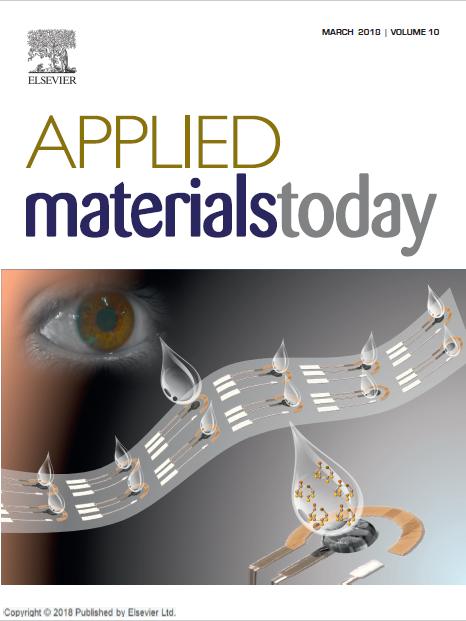Non-invasive glucose sensing in tears
Currently numerous medical diagnoses or follow-ups of many diseases are carried out by conventional methods such as clinical tests in laboratories and hospitals, being these invasive, slow and expensive.
Thanks to advances in technology, Point-of-Care (PoC) devices allow testing and monitoring of a multitude of biomedical markers or parameters in order to: (i) reduce costs, save time and reduce the complexity of the analysis; (ii) allow analysis in medical centers, primary care centers or even at home and (iii) real-time results allow to accelerate the decision-making on a patient. Thus, PoC devices respond to a demand from medical doctors as is the efficient health service thanks to the rapid availability of the laboratory analysis results.
In this context, a team of scientists from Barcelona have collaboratively developed a non-enzymatic sensor for glucose sensing in a non-invasive manner in tears. The work, cover of the magazine Applied Materials Today, demonstrates the proof of concept of the functionality of this electrochemical sensor.
Ana Moya, researcher of the CIBER-BBN and member of the research group of the Institute of Microelectronics of Barcelona CSIC, responsible for the sensors manufacture explains how these devices are fabricated by the innovative technology of Printed Electronics. Specifically, electrochemical glucose sensors have been manufactured by printing microelectrodes using Inkjet Printing Technology (IJP) on a flexible substrate of polyethylene terephthalate (PET) with silver and gold inks. The IJP dispenses small drops of the material to be printed under a graphic environment. This direct writing approach without the need of masks drastically reduces the total manufacturing time and cost of the sensors, and facilitates iterative design changes during sensor development.
Gemma Gabriel, Scientific Coordinator of NANBIOSIS U8. Micro–Nano Technology Unit and researcher of the CIBER-BBN in the Institute of Microelectronics of Barcelona CSIC, explains how the IJP is a promising and low-cost alternative to conventional microelectronic manufacturing technology, which will allow the creation of a multitude of highly specific sensor platforms and sensitive with analytical application in the medical area. In line with the research group, the advance in novel functional materials with these technologies is of paramount importance for the development of new generations of disposable sensor platforms to solve a wide range of applications in the medical field.
Agostino Romeo, member of the Smart nano-bio-devices Group at the Institut de Bioingenieria de Catalunya (IBEC) led by Samuel Sánchez, highlights how the use of copper oxide microparticles (CuO) has allowed the successful modification of the electrodes, leading to a sensitive, stable and cost-effective platform for the non-enzymatic detection of glucose. The selectivity, reproducibility and life time provided by this functionalization with CuO has shown that these sensors are reliable tools to perform a personalized diagnosis of the health of an individual.
The good sensitivity and selectivity of the electrochemical sensor presented here has made it particularly suitable for the non-invasive sensing of glucose in tears. This has been demonstrated in this study in which the glucose level in human samples has been measured and correlated with commercial devices.
All this allows us to foresee that the use of this type of sensors for the diagnosis of eye diseases such as diabetes, where it is possible to achieve a painless and non-invasive monitoring, has a great opportunity in a disease as widespread in the world as it is this one. Thus, versatility, short manufacturing time and low cost makes IJP a valuable technology alternative to traditional sensor manufacturing techniques. Thus, the technology here presented can be adapted for the detection of many other substances of interest in other fluids such as saliva or urine.
Article of Reference:
Romeo A, Moya A, Leung TS, Gabriel G, Villa R, Sánchez S. “Inkjet printed flexible non-enzymatic glucose sensor for tear fluid analysis“. Applied Materials Today 10 (2018) 133-141









